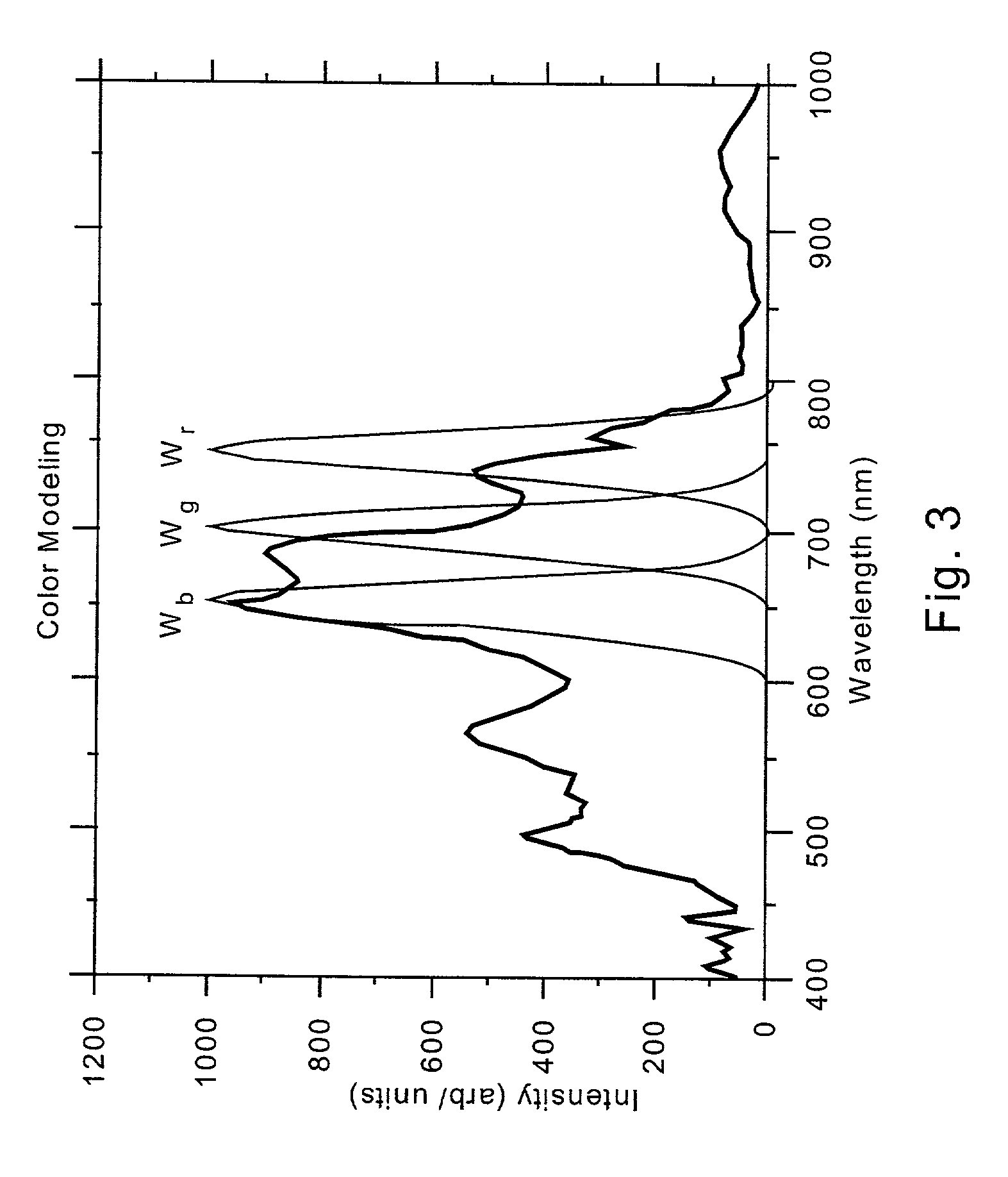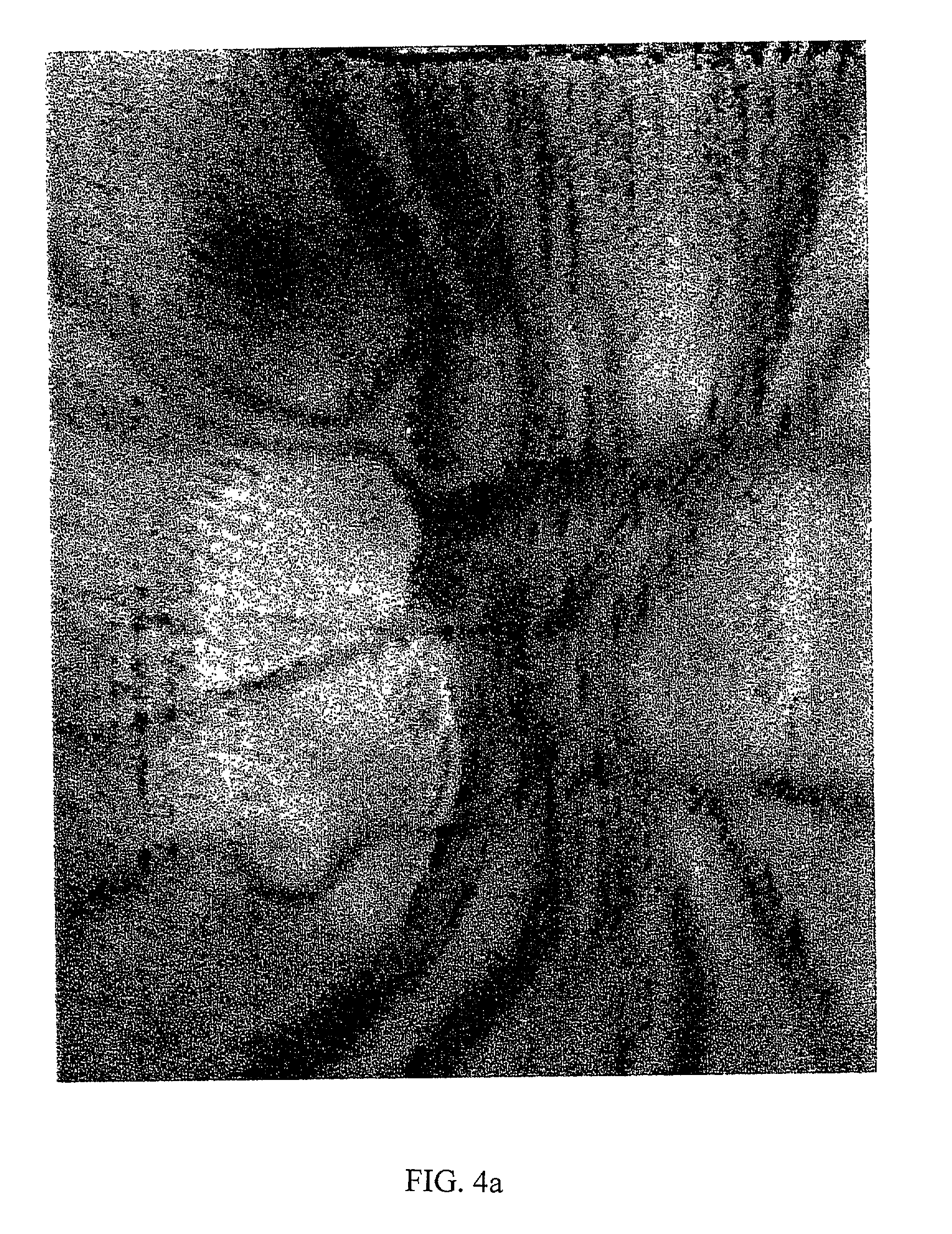Spectral bio-imaging of the eye
a bio-imaging and eye technology, applied in the field of spectral bio-imaging of the eye, can solve the problems of large size and configuration of remote sensing spectral imaging systems, limited use of air and satellite-born applications, and inability to choose,
- Summary
- Abstract
- Description
- Claims
- Application Information
AI Technical Summary
Benefits of technology
Problems solved by technology
Method used
Image
Examples
example 1
The Measurement Apparatus
[0106] FIG. 1 is a block diagram illustrating the main components of a prior art imaging spectrometer disclosed in U.S. Pat. No. 5,539,517. This imaging spectrometer is constructed highly suitable to implement the method of the present invention as it has high spectral (Ca. 4-14 nm depending on wavelength) and spatial (Ca. 30 / M .mu.m where M is the effective microscope or fore optics magnification) resolutions.
[0107] Thus, the prior art imaging spectrometer of FIG. 1 includes: a collection optical system, generally designated 20; a one-dimensional scanner, as indicated by block 22; an optical path difference (OPD) generator or interferometer, as indicated by block 24; a one-dimensional or two-dimensional detector array, as indicated by block 26; and a signal processor and display, as indicated by block 28.
[0108] A critical element in system 20 is the OPD generator or interferometer 24, which outputs modulated light corresponding to a predetermined set of lin...
example 2
Display and Analysis of Spectral Images
[0125] a. General
[0126] As mentioned above, a spectral image is a three dimensional array of data, I(x,y,.lambda.), that combines spectral information with spatial organization of the image.
[0127] As such, a spectral image is a set of data called a spectral cube, due to its dimensionality, which enables the extraction of features and the evaluation of quantities that are difficult, and in some cases even impossible, to obtain otherwise.
[0128] Since both spectroscopy and digital image analysis are well known fields that are covered by an enormous amount of literature [see, for example, Jain (1989) Fundamentals of Digital Image Processing, Prentice-Hall International], the following discussion will focus primarily on the benefit of combining spectroscopic and imaging information in a single data set i.e., a spectral cube.
[0129] One possible type of analysis of a spectral cube is to use spectral and spatial data separately, i.e., to apply spectral...
example 4
Spectral Imaging of Moving Objects
[0168] According to the present invention provided are spectral images of the eye collected preferably by an interferometer based spectral imager.
[0169] Since, in order to perform a measurement, an interferometer based spectral imager must collect several frames of an examined object in a period of time that varies from ca. 5 to 60 seconds, a considerably longer period of time as compared with a camera or video camera snapshot, spectral imaging of moving objects, like the eye results in blurring of the image of the object and in disrupting the algorithm used to calculate the spectrum of each pixel thereof.
[0170] Indeed, while using the apparatus disclosed in U.S. Pat. No. 5,539,517 one This is indeed the case in many applications, such as when spectral imaging is used for color karyotyping and color banding of chromosomes as disclosed in Schroeck et al. (1996) Multicolor spectral karyotyping of human chromosomes. Science 273:494-497. However, in oth...
PUM
| Property | Measurement | Unit |
|---|---|---|
| OD | aaaaa | aaaaa |
| time | aaaaa | aaaaa |
| wavelengths | aaaaa | aaaaa |
Abstract
Description
Claims
Application Information
 Login to View More
Login to View More - R&D
- Intellectual Property
- Life Sciences
- Materials
- Tech Scout
- Unparalleled Data Quality
- Higher Quality Content
- 60% Fewer Hallucinations
Browse by: Latest US Patents, China's latest patents, Technical Efficacy Thesaurus, Application Domain, Technology Topic, Popular Technical Reports.
© 2025 PatSnap. All rights reserved.Legal|Privacy policy|Modern Slavery Act Transparency Statement|Sitemap|About US| Contact US: help@patsnap.com



